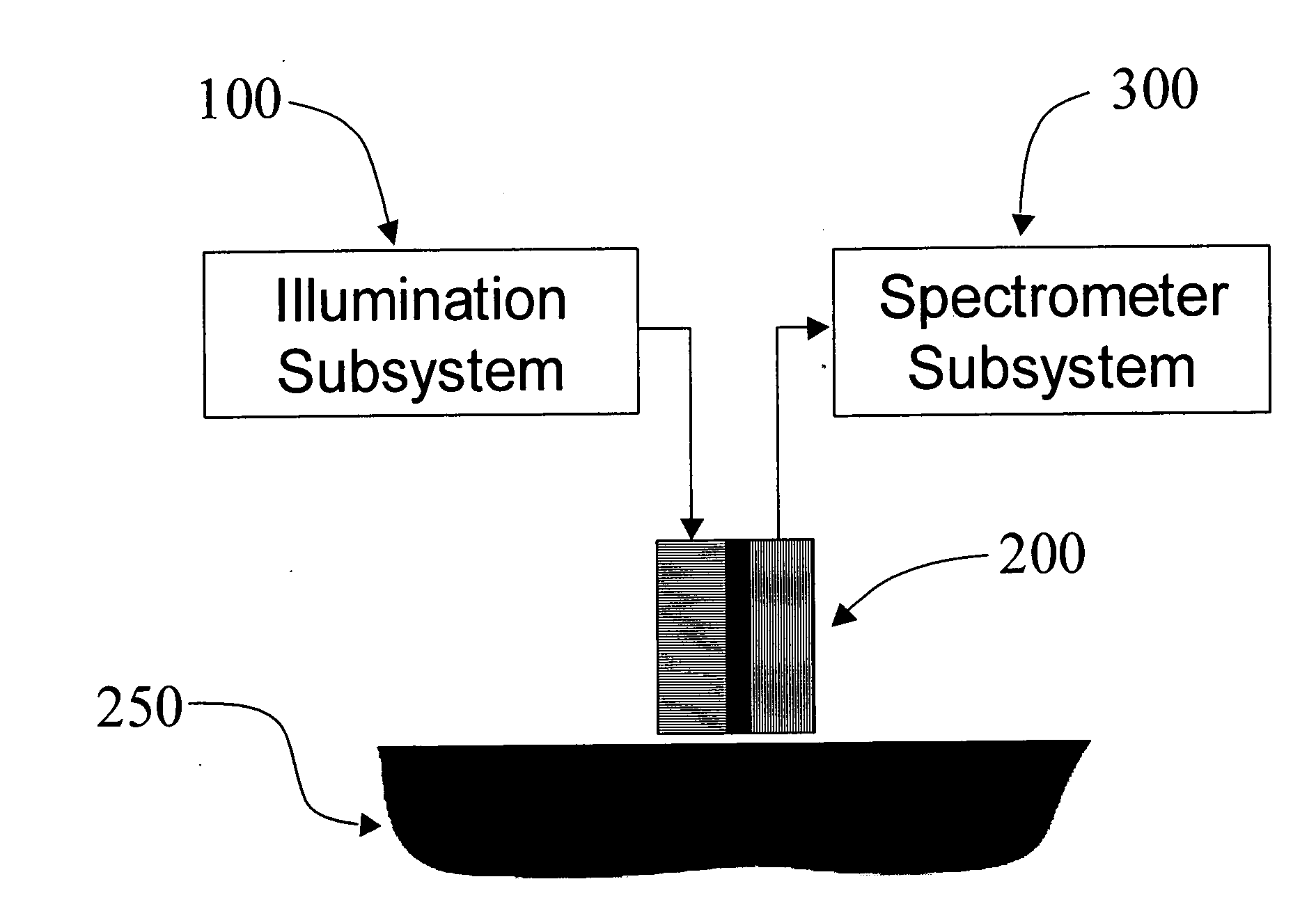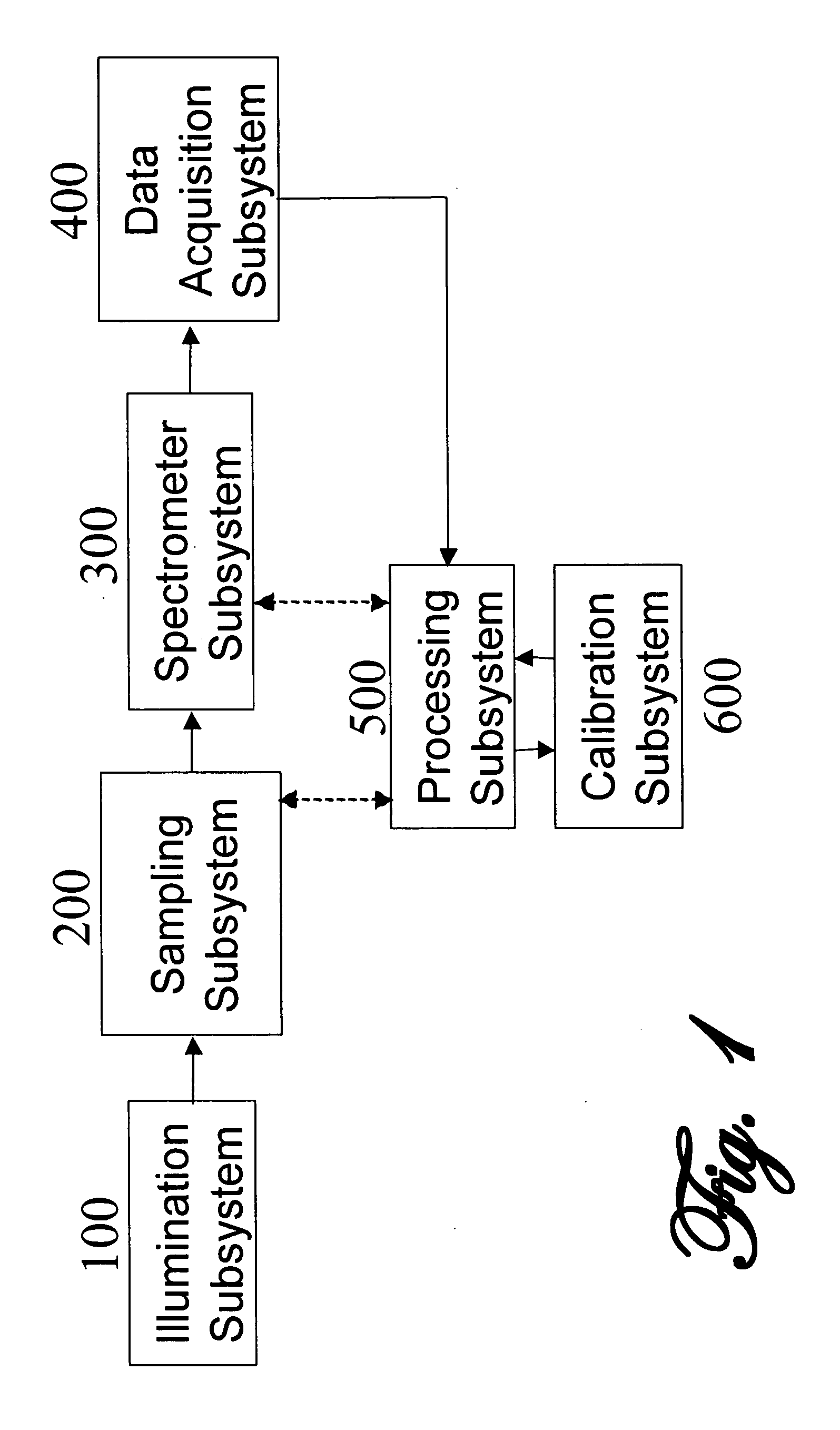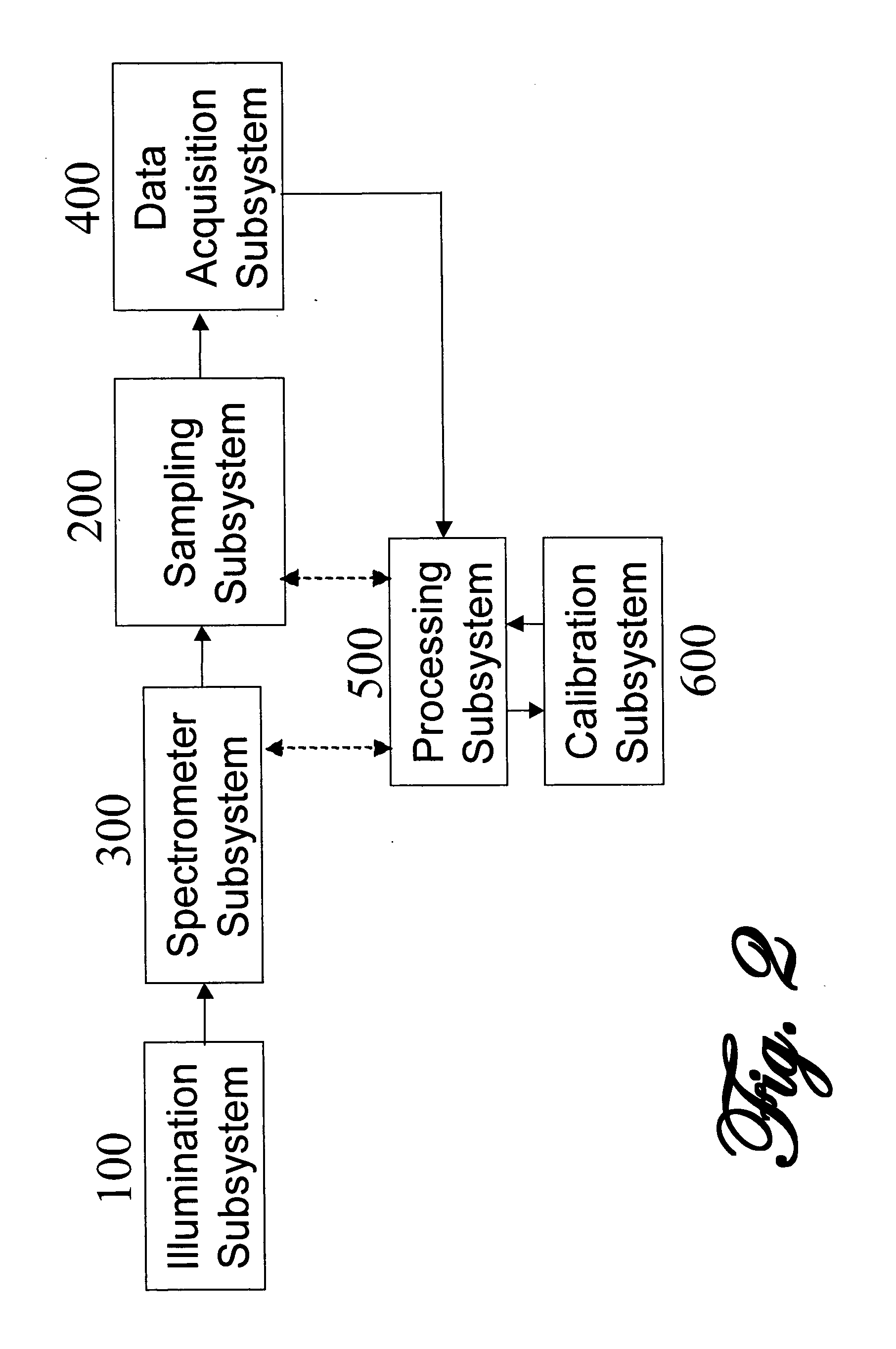Apparatus and methods for mitigating the effects of foreign interferents on analyte measurements in spectroscopy
a technology of foreign interference and spectroscopy, applied in the field of measurement, can solve the problems of difficult reliable analyte measurements, difficult use of the mid-infrared region, and virtually all light introduced, so as to reduce the susceptibility of interference, minimize the travel through the interference, and reduce the possibility of contamination of the sensor
- Summary
- Abstract
- Description
- Claims
- Application Information
AI Technical Summary
Benefits of technology
Problems solved by technology
Method used
Image
Examples
Embodiment Construction
[0042] Detailed embodiments of the present invention are disclosed herein. However, it is to be understood that the disclosed embodiments are merely exemplary of the present invention which can be embodied in various systems. Therefore, specific details disclosed herein are not to be interpreted as limiting, but rather as a basis for the claims and as a representative basis for teaching one of skill in the art to variously practice the invention.
[0043] Various methods for reducing the influence of non-analyte spectral effects inherently present in the sample have been proposed; an understanding of those can aid in appreciation of the present invention. In US 2003 / 0216627 A1, incorporated herein by reference, Lorentz et al. disclose a measurement site dependent preprocessing method for robust calibration and prediction of analytes in humans. The method refers to tissue heterogeneity caused by site-to-site variations, differences between people, differences between instruments and ph...
PUM
 Login to View More
Login to View More Abstract
Description
Claims
Application Information
 Login to View More
Login to View More - R&D
- Intellectual Property
- Life Sciences
- Materials
- Tech Scout
- Unparalleled Data Quality
- Higher Quality Content
- 60% Fewer Hallucinations
Browse by: Latest US Patents, China's latest patents, Technical Efficacy Thesaurus, Application Domain, Technology Topic, Popular Technical Reports.
© 2025 PatSnap. All rights reserved.Legal|Privacy policy|Modern Slavery Act Transparency Statement|Sitemap|About US| Contact US: help@patsnap.com



